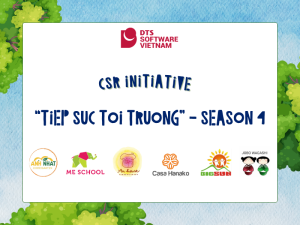In today’s digital economy, sustainable growth for small and medium-sized enterprises (SMEs) has become a top priority. For SMEs across Vietnam, Japan, and Asia, embracing digital transformation, automation, and IT solutions is not just about improving operations—it’s about laying a solid foundation for long-term, resilient success.
Why Sustainable SME Growth Matters in Vietnam, Japan, and Across Asia
SMEs are the backbone of most Asian economies. As of Q1 2025, Vietnam is home to approximately 900,000 businesses—over 98% of which are SMEs. This segment contributes more than 40% of the country’s GDP and generates over 50% of jobs. In Japan, the numbers are similar: 99.7% of businesses are SMEs, employing 70% of the workforce.
Across Southeast Asia, SMEs make up about 97% of all businesses, employ 67% of the labor force, and contribute roughly 40% of national GDP. These figures underscore the critical role of SMEs in driving economic prosperity and maintaining social stability.
However, achieving sustainable growth remains a major challenge. In Vietnam, COVID-19 forced nearly 10,000 businesses—mostly SMEs—to halt operations each month during 2021. Even in Japan, a leading economy, many SMEs lag behind in digital adoption, limiting productivity. According to the OECD, small businesses and service sectors in Japan often fall short in leveraging advanced digital tools, largely due to funding limitations, a shortage of tech talent, and lack of strategic awareness.
Digital Transformation: The Catalyst for Sustainable SME Growth
Digital transformation is arguably the most powerful driver of SME sustainability. It involves integrating digital technologies across business operations—from production and management to sales and customer service—to create value and increase efficiency.
Optimize Operations and Boost Productivity
Automation minimizes repetitive tasks, reduces errors, and saves time. For instance, ERP (Enterprise Resource Planning) systems centralize data, enhance internal coordination, streamline production, and manage inventory more effectively. According to the World Bank, ERP adoption can significantly improve process efficiency, labor productivity, sales, and profit.
In Vietnam, Đức Thành Wood Manufacturing—an SME—saw a 30% revenue increase within one year of implementing ERP and e-commerce. Meanwhile, An Phước Garment shortened delivery times by 20% using supply chain management software. These examples highlight how digital adoption directly improves performance and long-term sustainability.
Expand Market Reach and Improve Customer Experience
Digital platforms empower SMEs to scale through e-commerce and digital marketing. In Vietnam alone, 8 million new digital consumers emerged in the first half of 2021—55% of whom were from outside major cities. By embracing this shift, SMEs can thrive via online sales and digital customer engagement.
Tools like CRM (Customer Relationship Management) and marketing automation allow for personalized interactions and efficient customer care. Moreover, digital platforms enable business continuity during disruptions, enhancing resilience and sustainability.
Data-Driven Decision-Making
Digital transformation enables real-time data collection and smart decision-making. With tools like BI (Business Intelligence) and AI, SMEs can analyze key metrics—such as revenue, cost, staff performance, and customer satisfaction—leading to faster and more accurate business decisions.
The World Bank notes that SMEs leveraging ERP or similar systems can plan better, serve customers more effectively, and increase profitability. Data-driven operations are critical for navigating market shifts and optimizing resources—core tenets of sustainable growth.
A recent survey in Vietnam found that over 80% of SME leaders are eager to embrace digital transformation, with 65% ready to invest significantly. Digital adoption boosts competitiveness, product quality, cost efficiency, and global supply chain integration—making it vital for survival and success in today’s volatile market.
Automation and Software: Key Enablers of Long-Term SME Success
Beyond general digitalization, automation and specialized software play a pivotal role in SME sustainability. Automation—via robotics, AI, or IoT—reduces dependency on manual labor and increases accuracy.
Boosting Productivity Through Automation
In manufacturing and service sectors, automation enables SMEs to compete at scale. For example, robotic systems allow small businesses to match large-scale production outputs with lower labor costs and reduced defects. In Japan, a leader in robotics and AI, SMEs are encouraged to adopt new tech to offset labor shortages due to aging demographics.
Yet, adoption remains uneven. In Singapore, a global digital hub, 44% of large firms had adopted AI by 2023—compared to just 4.2% of SMEs. While over 90% of Singaporean SMEs have a digital strategy, high implementation costs and limited skillsets remain key barriers. This gap highlights the global need for support in helping SMEs access and integrate advanced technologies.
The Power of Business Software
In Vietnam, many SMEs still underutilize tools like ERP, accounting software, HR systems, and CRM—hindering sustainable growth. Cloud-based SaaS solutions offer a cost-effective alternative, allowing small businesses to streamline operations without heavy infrastructure investments.
Automation also minimizes human error, enhances consistency, and builds scalable workflows—key for sustainable expansion without operational breakdowns.
Green Transition and ESG: The Next Frontier in Sustainable Growth
Sustainable growth goes beyond profitability—it includes environmental and social responsibility. The green transition and ESG (Environmental, Social, and Governance) frameworks are becoming global standards, affecting all businesses, including SMEs.
Embracing Green Practices and ESG Compliance
Governments and international bodies in Asia are pushing for green business models. Major markets like the U.S. and EU now enforce strict carbon and ESG regulations, impacting export standards. For example, Vietnamese tech providers working with Japanese and European partners must now file annual ESG reports.
IT acts as a bridge between digital and green transformation. Smart technologies help track energy usage, optimize logistics, and reduce waste through data-driven production processes. According to the British Standards Institution (BSI), digital tools enhance adaptability, while green initiatives reduce emissions—together driving sustainable and resilient growth.
Vietnamese SMEs are already embracing this trend by using solar-powered plants and energy-efficient systems, cutting electricity costs and emissions. Green financing is also on the rise, with banks offering preferential loans to eco-friendly businesses.
A 2023 PwC report revealed that 45% of global CEOs fear their companies won’t survive the next decade without adopting sustainability. In response, 80% of large firms have committed to ESG investments. For SMEs, this is a wake-up call: embracing ESG now not only boosts brand reputation and operational resilience but also attracts investors and international partners.
Key Challenges in the SME Sustainability Journey
Despite the benefits, the road to sustainable SME growth is not without hurdles:
Limited Financial Resources
High upfront costs for IT systems, automation tools, and software licenses deter many small businesses. Surveys in Singapore and Vietnam show that implementation costs are the biggest barrier to tech adoption among SMEs.
Lack of Skilled Talent
New technologies require a digitally skilled workforce. Many SMEs lack in-house IT expertise and struggle to hire or train qualified personnel due to budget constraints. OECD reports that Japan’s shortage of STEM graduates and digital talent limits SME growth potential.
Reluctance to Change and Lack of Strategy
Some SME owners are wary of large operational changes, preferring traditional methods. A 2025 VCCI survey found that 55% of Vietnamese SMEs had never applied any digital technology—highlighting a resistance to innovation. Without clear strategies or guidance, many businesses don’t know where to start.
Infrastructure Gaps and Lack of Support Ecosystems
In many rural areas and developing economies, limited internet and telecom infrastructure continues to hinder SMEs from accessing digital tools. Moreover, many regions lack a robust support ecosystem—such as consulting services, tech training, or funding programs—making it difficult for small businesses to find the expertise they need to embark on their digital journey.
Addressing these challenges requires a holistic approach from businesses, governments, and international organizations to ensure SMEs are not left behind in the race toward digital transformation and sustainable development.
Practical Solutions and Support Systems for Sustainable SME Growth
To help SMEs grow sustainably, a multi-layered support ecosystem is essential—one that includes government policies, financial resources, and collaboration with technology partners. Here are key initiatives driving sustainable growth for SMEs:
1. Government Support and Digital Policy Initiatives
Many countries have launched dedicated digital transformation programs for SMEs. In Vietnam, the government’s SMEdx initiative has been in place since 2021. As of early 2025, the program has supported over 80,000 businesses in adopting digital platforms for finance, HR, sales, and customer service. The target: at least 30% of SMEs adopting digital solutions by the end of 2025.
Financial support is also expanding. Credit guarantee funds and subsidized loan packages are helping SMEs invest in technology. In Japan, dozens of SME-focused programs and laws are in place, backed by a national network of 8,000+ certified business consultants. These policies empower SMEs with the confidence and tools needed to pursue sustainable innovation.
2. International Support for SMEs: World Bank, UNDP, ADB & More
International organizations such as the World Bank, UNDP, OECD, and the Asian Development Bank (ADB) are actively supporting SME development in emerging markets. One standout example: the World Bank’s two-year initiative in Vietnam, assisting 600 SMEs with digital transformation through grant programs like “Digital Express” and “Digital Prime.”
Participating companies receive licensed ERP software, technical guidance, and training to overcome barriers in funding, digital know-how, and operational capacity. These efforts help prevent SMEs in developing economies from falling behind—and provide scalable models for broader regional support.
3. Tech Partnerships and Public–Private Collaboration
Major tech firms and startups are stepping up to support SMEs. Many offer low-cost or freemium digital tools tailored to small businesses. For instance, Singapore’s CTO-as-a-Service program pairs SMEs with dedicated tech advisors and ready-to-deploy digital solutions, with subsidies from the Productivity Solutions Grant (PSG).
Public–private partnerships (PPPs) also bridge the gap between SMEs and academic institutions or research labs to facilitate practical tech transfer. In Vietnam, associations like VCCI and the Vietnam SME Association are teaming up with global tech companies to offer free workshops and digital upskilling programs.
SMEs can also tap into the expertise of trusted IT outsourcing partners for software development, system management, and digital consulting—without the overhead of building in-house teams.
4. Building Digital Talent and a Culture of Innovation
Ultimately, sustainable growth is about people. Businesses must invest in digital training, encourage continuous learning, and promote a culture that embraces change. Programs like Singapore’s TechSkills Accelerator (TeSA) have trained over 18,000 people—including mid-career workers and community college students—preparing them for tech-forward roles.
To thrive long term, SMEs must foster a culture of innovation. This means leadership with a strategic vision for sustainability and a workforce that is ready to adapt and grow. When human capital and technology move in sync, sustainable growth becomes not just possible—but inevitable.





